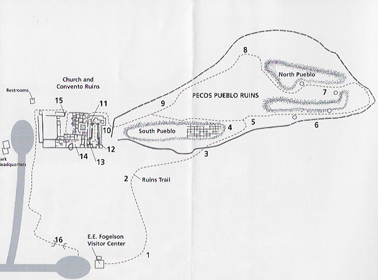
On trail on left at #3 (N35D33'06.072 X W105D41'22.967)
Flowers first observed: None in 2017
The Plant

The Leaves & Thorns

Distribution
"Found in montane, subalpine, and alpine habitats, open slopes or exposed ridges from 6,500-11,500 ft (1981-3505 m), flowers June-August. Distribution: Apache, Coconino, and Graham counties; western Canada, western U.S." (SEINet)
Description
"Deciduous shrub, 0.2-1 m (0.7-3 ft) tall; armed with 3-5 nodal spines, these straight, 2.3-8 mm long, usually with internodal bristles; stems sprawling to weakly ascending; branches gray, becoming reddish brown with age; twigs tan, occasionally slightly pubescent. Leaves: Alternate, simple, circular to pentagonal in outline, 0.4-3.5 cm long, 0.6-5 cm wide, deeply 5-lobed to divided, green above, pale green below, densely pubescent with glandular and non-glandular hairs on both surfaces, margins crenate-dentate; petioles 0.4-4 cm long. Flowers: Racemes 3-8 flowered; subtending bracts lanceolate, 1.3-3 mm long; pedicels 1-4 mm long, non-glandular and glandular pubescent, jointed below the ovary; ovary glandular-bristly; hypanthium saucer-shaped, 0.5-1.5 mm long, greenish white or purplish; calyx lobes 2.5-4 mm long, usually purplish, spreading; petals 1-1.5 mm long, purplish; stamens about equaling the petals; styles glabrous. Fruits: Berry, nearly globose, 5-10 mm in diameter, purplish red, with glandular bristles, dry; seeds numerous, 1.5-2.8 mm long." (SEINet)
Ethnobotanical Uses
Food:
"Cahuilla Fruit Berries eaten fresh." (Moerman)
"Notes: The plant provides food for birds, chipmunks, and ground squirrels, and is a host plant for the tailed copper butterfly." (SEINet)
Internet Links